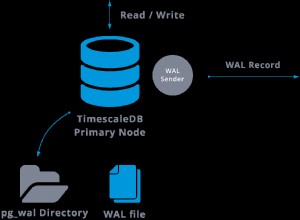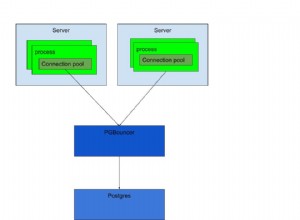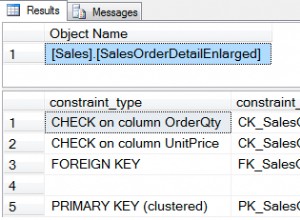Seguro que son 2 años después, pero quería aportar una solución. Este procedimiento copia una tabla en "BackUp_
ALTER PROCEDURE dbo.Admin_CopyTable
@TableName NVARCHAR(255)
AS
BEGIN
-- SET NOCOUNT ON added to prevent extra result sets from interfering with SELECT statements.
SET NOCOUNT ON;
-- is there any work to do?
IF NOT (isNull(@TableName,'')='')
BEGIN
-- Get list of all tables that match the @TableName wildcard
DECLARE @tables TABLE (id BIGINT IDENTITY(1,1), [name] NVARCHAR(255)) -- using id as means to avoid cursor
INSERT INTO @tables SELECT table_name FROM information_schema.tables WHERE table_name LIKE '%' + @TableName + '%' AND table_name NOT LIKE 'BackUp_%' ORDER BY table_name
-- Go through each table and copy it
DECLARE @row BIGINT;
DECLARE @thisTable AS NVARCHAR(255);
DECLARE @dSQL NVARCHAR(4000); -- holds the SQL string to execute and copy table data
DECLARE @TablePrefix NVARCHAR(255); -- Name that is prepended before the name of the actual table to show it is a backup table
-- set default prefix by adding todays date to the table name
SELECT @TablePrefix = 'BackUp_' + CONVERT(NVARCHAR(10), GetDate(), 112) + '_'; -- Date as YYYYMMDD
-- Get first row for looping through list of tables
SELECT @row = MIN(id) FROM @tables;
WHILE (isNull(@row, 0) <> 0) -- returns null when no more rows, which gets converted to 0 (zero)
BEGIN
SELECT @thisTable = [name] FROM @tables where id = @row
IF NOT EXISTS(SELECT table_name FROM information_schema.tables WHERE table_name like @TablePrefix + @thisTable)
BEGIN
SET @dSQL = 'Select * Into ' + @TablePrefix + @thisTable + ' from ' + @thisTable;
EXEC (@dSQL)
PRINT @TablePrefix + @thisTable + ': Data Backed up.'
-- Copy the Primary Key into the Backup table
BEGIN
-- Get list of all the columns that make up the Primary Key
-- for composite PK's = one row per pk column
DECLARE @PKColsTbl table ([name] NVARCHAR(255), col NVARCHAR(255))
INSERT INTO @PKColsTbl
SELECT c.Constraint_Name, c.COLUMN_NAME
FROM INFORMATION_SCHEMA.TABLE_CONSTRAINTS pk
,INFORMATION_SCHEMA.KEY_COLUMN_USAGE c
WHERE pk.TABLE_NAME = @thisTable
and CONSTRAINT_TYPE = 'PRIMARY KEY'
and c.TABLE_NAME = pk.TABLE_NAME
and c.CONSTRAINT_NAME = pk.CONSTRAINT_NAME
-- Transpose rows into one column as a comma delimeted string
DECLARE @pkCol NVARCHAR(255);
SELECT @pkCol = stuff((select ',' + col from @PKColsTbl for XML PATH('')), 1,1,'')
-- Build the dynamic SQL statement and execute it
SET @dSQL = 'ALTER TABLE ' + @TablePrefix + @thisTable + ' ADD CONSTRAINT ' + 'PK_' + @TablePrefix + @thisTable + ' PRIMARY KEY (' + @pkCol + ')'
EXEC (@dSQL)
PRINT @TablePrefix + @thisTable + ': PK Created.'
-- Since its a loop, clear out the table
DELETE FROM @PKColsTbl
END
-- END of Copying the Primary Key
END
ELSE
BEGIN
PRINT @TablePrefix + @thisTable + ': Exists!'
END
-- Get next row
SELECT @row = min(id) FROM @tables WHERE id > @row
END
END
END




